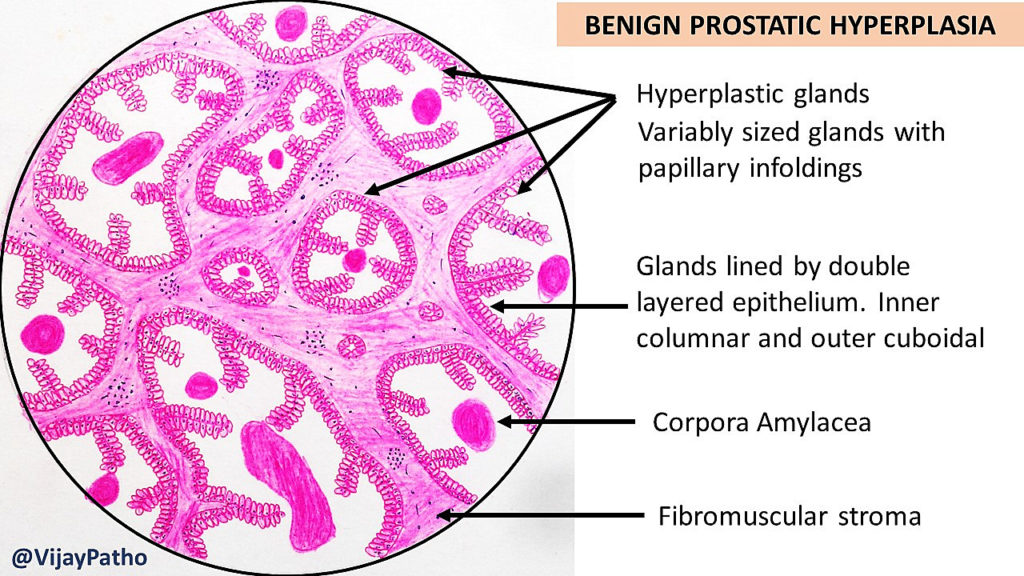
Benign prostatic Hyperplasia ( BPH)
1. What is Benign prostatic Hyperplasia ( BPH)
Benign prostatic hyperplasia (BPH) is the most common cause of prostatic enlargement which results from proliferation of of stromal and glandular elements.
2. What is the cause for Benign prostatic Hyperplasia
There is a very important role of androgen-dependent proliferation of glands and stroma as illustrated below
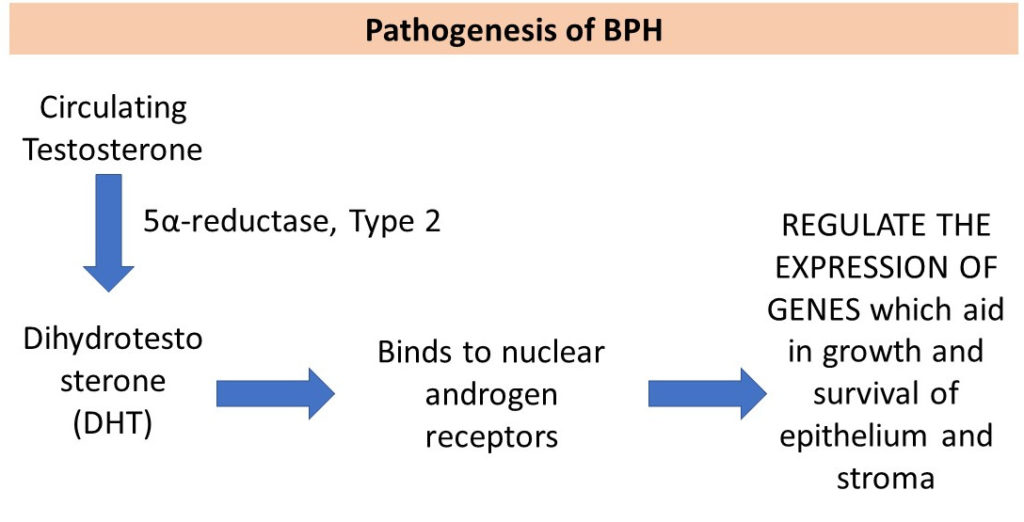
3. Name the different lobes of prostate
The prostate is divided into several lobes namely, Anterior, posterior, two lateral and median lobe.
4. Name the different zones of prostate and in which zone BPH is common
The zones are Central (CZ), Peripheral (PZ) and Transitional (TZ).What are the gross features of Benign prostatic Hyperplasia ( BPH).BPH almost always occur in the inner transition zone.
5. Describe the gross features of Benign prostatic hyperplasia.
There will be periurethral, variably sized circumscribed nodules. These nodules can be solid to cystic. If the enlargement is predominantly glandular, then there will be many cystic spaces and on compression it oozes prostatic fluid. If the hyperplasia is predominantly stromal, then the cut surface is greywhite and solid.
6. Describe the microscopy of Benign prostatic hyperplasia
The hyperplastic nodules are comprised of varying proliferations of glands and stroma ( see images below)
The glands have bilayered epithelium with inner tall columnar and outer cuboidal to flattened epithelium. The lumen of the glands show corpora amylacea which are laminated proteinaceus material.
The stroma may show non specific chronic inflammatory cells.
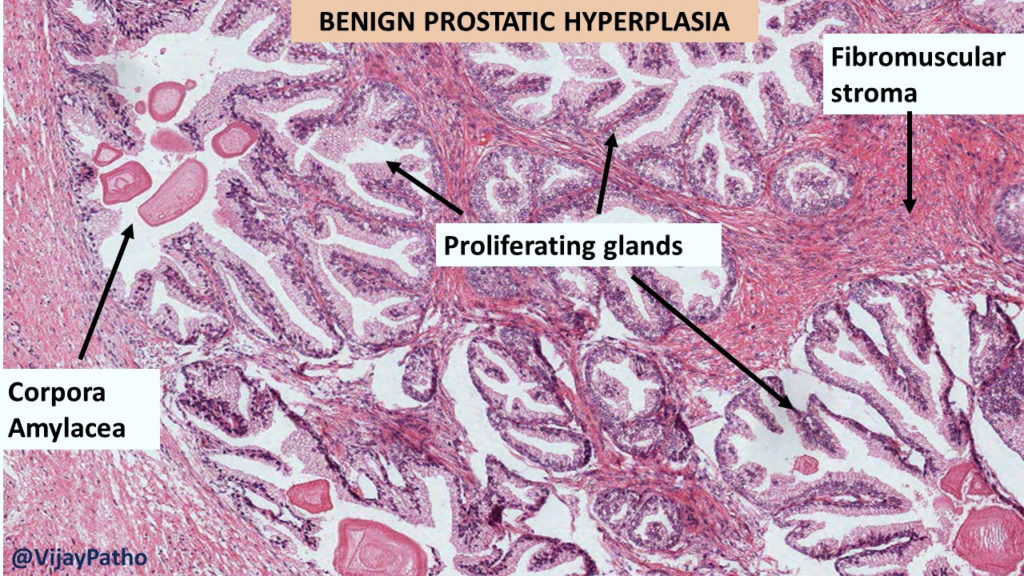
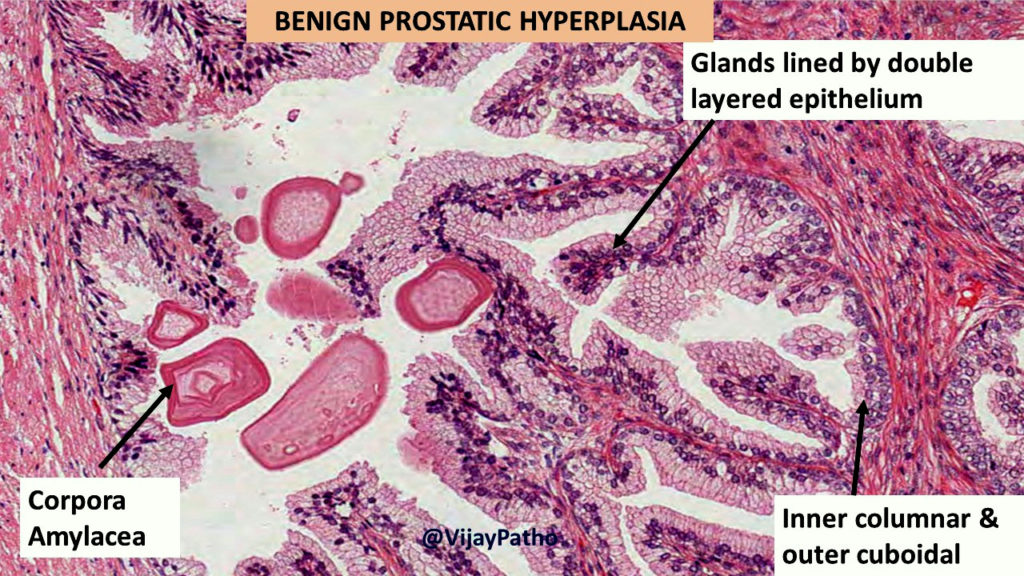
7. What are the complications of Benign prostatic hyperplasia
The complications are as follows
a. Urinary obstruction with or without retention
b. Inflammation
c. Can predispose to infection
d. Hematuria
e. Kidney and bladder damage
8. What is TURP
It is an abbreviation for Trans Urethral Resection of Prostate (TURP)

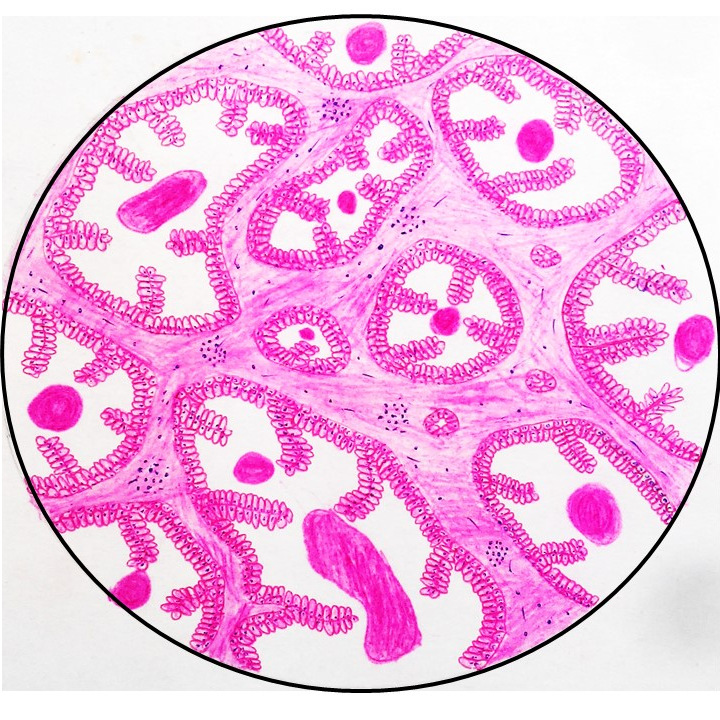
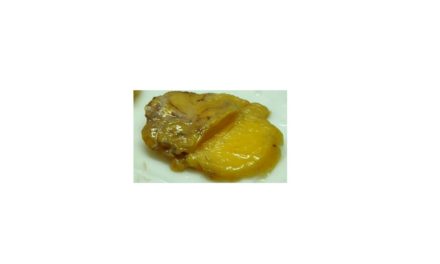
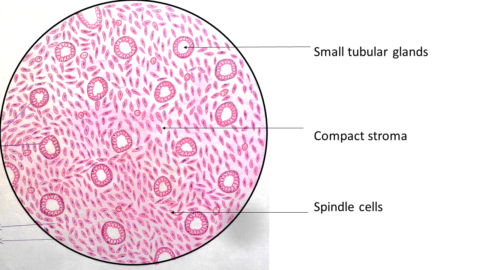






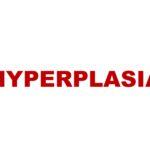
Recent Comments